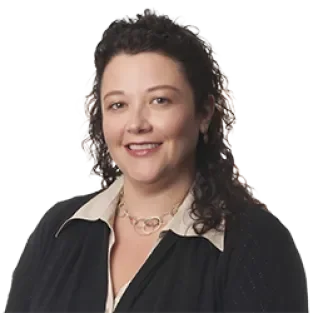ASAP
Bonding by the Bay: San Francisco Mandates Paid Parental Leave
On April 21, 2016, Mayor Ed Lee signed an ordinance making San Francisco the first municipality to require private employers to compensate employees while on parental bonding leave. Under the law, when covered employees use California paid family leave (PFL) benefits for new child bonding – bonding with a minor child during the first year after birth or placement through foster care or adoption – covered employers must pay “supplemental compensation.” The new ordinance, operative on January 1, 2017, continues San Francisco’s legacy of progressive employment standards.1
San Francisco Paid Parental Leave Ordinance Coverage
San Francisco’s ordinance covers employers with 20 or more employees, as long as one of those employees works in the City. The law, dubbed the “Paid Parental Leave Ordinance” (PPL), becomes operative on January 1, 2017. But the date on which an employer must begin offering supplemental compensation depends on an employer’s size: January 1, 2017, for employers with 50 or more employees; July 1, 2017, for employers with 35 or more employees; and January 1, 2018, for employers with 20 or more employees.
San Francisco’s PPL supplemental compensation is available to employees (including part-time and temporary employees) of a covered employer, and is applicable starting after the employee has been employed for 180 days. To be eligible, the employee must work at least eight hours per week (and at least 40% of the employee’s total weekly hours must be within San Francisco).2 Finally, the employee must be considered eligible, by the State of California, to receive California PFL benefits to bond with a new child.
The ordinance does not apply to employees covered by a bona fide collective bargaining agreement (CBA) if its requirements are expressly waived in clear and unambiguous terms or the CBA was entered into before the law’s effective date.3
What is California Paid Family Leave?4
California PFL is a state-run benefits program providing partial wage replacement to eligible workers suffering wage loss when they take leave from work to care for a seriously ill child, parent, parent-in-law, grandparent, grandchild, sibling, spouse, or registered domestic partner, or to bond with a new child.5 Eligible workers can receive up to six weeks of benefits during a 12-month period. The program is funded through state disability insurance contributions.
Determining San Francisco Paid Parental Leave Supplemental Compensation
For claims beginning on or after January 1, 2016, California’s PFL benefit program provides a maximum weekly benefit of $1,129 (55% of weekly wages for an employee with an annual salary of $106,647.32).6 For claims beginning on or after January 1, 2018, but before January 1, 2022, the maximum weekly benefit will increase to either 60 or 70% of weekly wages, subject to an established maximum weekly benefit.7 Under the PPL ordinance, the amount of San Francisco supplemental compensation an employer would pay is the difference between the employee’s current normal gross weekly wage and state benefits received.8
An employee receiving California PFL benefits cannot receive San Francisco supplemental compensation if the amount of California PFL benefits and San Francisco PPL compensation combined would exceed the employee’s normal gross weekly wage. Accordingly, an employee must either provide his or her employer a copy of the Notice of Computation of California Paid Family Leave Benefits or other legally authorized statement, or authorize the state to disclose the weekly benefit amount to the employer. If an employee does not do so, the employer is not required to provide supplemental compensation.
When an employee works for more than one employer, the employee must supply each covered employer a copy of the Notice of Computation of California Paid Family Leave Benefits or other legally authorized statement, and a signed form with information about wages from all employers during the 90-day period before use of California PFL benefits begins. If notice is not provided, the covered employers are not required to provide San Francisco supplemental compensation. If notice is provided, supplemental compensation is apportioned among employers. If 80% of weekly wages comes from covered employer A and 20% from covered employer B, each pays supplemental compensation proportionally. However, if 20% comes from an employer that is not a covered employer, covered employer A meets its San Francisco PPL obligation by paying 80% of the employee’s supplemental compensation. It is not required to pay the other 20%.
Administering & Paying for Leave
If an employer’s policy provides at least six consecutive weeks9 of fully-paid parental leave in any 12-month period for new child bonding, regardless of whether it includes California PFL benefits, the employer is not required to provide supplemental compensation.
At their discretion, in order to more easily meet the San Francisco PPL requirements, employers can require employees to use up to two weeks of accrued vacation when California PFL starts.10 If an employee does not agree to use his or her accrued vacation, the employer is not required to provide supplemental compensation.11
To receive San Francisco supplemental compensation, an employee must sign a form created by San Francisco’s Office of Labor Standards Enforcement (OLSE), agreeing to reimburse supplemental compensation received, in full, if he or she voluntarily separates from employment within 90 days of the end of his or her leave period, if the employer makes a written reimbursement request.
If employers pay California PFL benefits via a state-approved voluntary disability insurance plan, they comply with San Francisco PPL requirements by paying supplemental compensation through the plan or to employees directly.
If an employee is terminated during a bonding leave where the employee is receiving California PFL benefits, the employer’s San Francisco PPL obligation continues for the remainder of the PFL benefits period.
Posting & Recordkeeping Obligations
Covered employers must conspicuously post an OLSE-created notice at each workplace or job site where any covered employee works that informs employees about their San Francisco PPL rights. Notices must be posted in English, Spanish, Chinese, and any language spoken by at least five percent of employees at the workplace or site.
Employers must keep records documenting supplemental compensation paid for three years. If an issue arises concerning an employee’s entitlement to supplemental compensation and adequate records are not kept, it is presumed the employer violated the ordinance absent clear and convincing evidence otherwise.
Prohibited Acts
Reducing an employee’s wages during a covered leave period or within 90 days of making a request or application for California PFL creates a rebuttable presumption that the employer acted to reduce its San Francisco supplemental compensation obligation, unless the employer provides clear and convincing evidence the reduction was solely for a different reason.
Covered employers cannot interfere with, restrain, or deny the attempted or actual exercise of a right protected under the ordinance. Additionally, the PPL prohibits a covered employer or any other person from threatening to or actually discharging, demoting, suspending, or in any manner discriminating or taking adverse action against a person for exercising – even if mistakenly but in good faith – protected rights, including but not limited to the right to: request supplemental compensation; file a complaint or inform any person about an employer’s alleged violation; cooperate with an OLSE investigation of an alleged violation; or inform any person of his or her possible rights. Taking adverse action against a person within 90 days of exercising a protected right creates a rebuttable presumption of retaliation, unless the employer provides clear and convincing evidence the action was solely for a different reason.
Enforcement
Complaints can be filed with OLSE, which will investigate alleged violations. It can order temporary or interim relief to mitigate a possible violation or maintain the status quo pending a full investigation or hearing. After a full hearing, it can order appropriate relief, including but not limited to payment of unlawfully withheld supplemental compensation as well as an administrative penalty (three times the amount of withheld supplemental compensation or $250, whichever is greater) to each employee or person whose rights were violated, and interest on amounts due and unpaid. If the violation caused harm to an employee or any other person, or violated their rights (e.g., posting or retaliation violations), the penalty must also include $50 to each individual whose rights were violated for each day or portion thereof the violation occurred or continued. To compensate the City for investigating and remedying violations, OLSE can also order a violator to pay San Francisco up to $50 for each day or portion thereof, and each aggrieved individual for whom, a violation occurred or continued. Also, it can request San Francisco agencies or departments to revoke or suspend registration certificates, permits, or licenses requested or held by the employer until violations are remedied. Additionally, OLSE can file a civil action.
The law provides a private right of action for aggrieved individuals and entities whose members are aggrieved. However, first written notice of intent to file suit must be served on OLSE and the City Attorney, which must include a statement of the grounds for believing a violation occurred. Moreover, a private suit cannot be filed if, within 90 days from the date the notice is served: the City files a civil action; informs the person or entity in writing it found probable cause to believe a violation occurred and intends to initiate administrative action; or informs the person or entity in writing it determined no violation occurred. But, if the City does not file suit or provide written notice within the 90-day period, a private lawsuit can be filed and the statute of limitations is tolled during the 90-day period.12 A successful plaintiff can recover appropriate legal or equitable relief, including, but not limited to: reinstatement; back pay; supplemental compensation unlawfully withheld (plus the greater of $250 or three times the dollar amount withheld); liquidated damages ($50 to each individual whose rights were violated for each day or portion thereof the violation occurred or continued); injunctive relief; reasonable attorneys’ fees and costs; and interest on amounts due and unpaid.13
Other Provisions
The ordinance provides minimum paid parental leave compensation requirements coordinated with the state’s PFL benefits and does not preempt, limit, or otherwise affect the application of any other law, regulation, requirement, policy or standard providing greater paid or unpaid leave or extending other protections. It does not prevent employers from adopting or keeping more generous leave and/or leave compensation policies. San Francisco PPL supplements other available sources of income during specified leave periods but does not expand, reduce, or otherwise affect the total amount of parental or other leave available to employees under federal, state, or local law, and is not intended to create any power or duty that conflicts with state or federal law. The ordinance will expire if California amends its PFL law to provide benefits for 100% of an eligible employee’s wages (with a maximum benefit cap). The City Controller may recommend that the ordinance be amended if a federal law mandates that private employers provide paid parental leave or provides government-funded paid parental leave.
Key Takeaways
- The ordinance applies to employers with 20 or more employees located anywhere (so long as at least one works in San Francisco), but when an employer must begin to offer supplemental compensation depends on an employer’s size.
- While the ordinance covers employers without a place of business in San Francisco (if the employee works in San Francisco), simply living in San Francisco does not entitle an employee to benefits.
- Benefits are not required if employees do not comply with certain requirements.
- Benefits are based on what 100% of state benefits would be if an employee receives the maximum state benefit, or an employee’s current normal gross weekly wage if receiving less than the maximum state benefit.
- Benefits can be offset by requiring employees to use accrued vacation.
- Employers should monitor OLSE’s website to obtain the required poster and determine whether FAQ and/or accompanying regulations will be issued.



